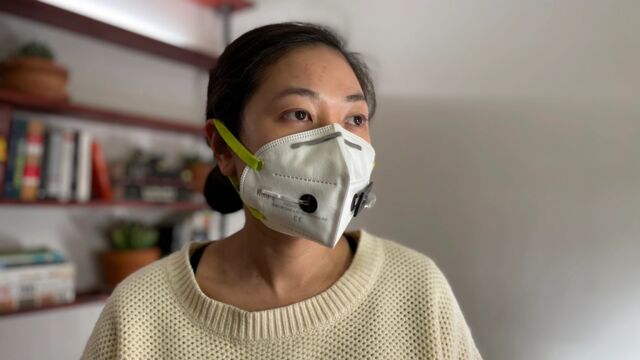This face mask can detect COVID infection while you wear it

A Prototype face mask has been created that can detect coronavirus infection in its wearers in just 90 minutes.
A new coronavirus protection maskprototype has been released that can detect COVID infection in 90 minutes.
Discover our latest podcast
The US-made mask uses tiny, disposable sensors that can be used in a range of masks and even modified to detect other viruses. The invention could also be used in different clothing items.
How does the COVID detecting mask work?
The sensors are located inside the mask and can detect viral particles expelled in the wearer’s breath. The mask also includes a small reservoir of water that can be manually released when the wearer is ready to conduct a COVID test. Then, after roughly 90 minutes, the results will be displayed on the inside of the mask for privacy.
More under this adMore under this adResearchers claim that when released, the water will hydrate the freeze-dried cell components of the sensor, which then analyse the presence of COVID in the breath droplets accumulated inside the mask. Dr Peter Nguyen, a research scientist at Harvard University’s Wyss Institute for Biologically Inspired Engineering, explained:
This test is as sensitive as the gold standard, highly sensitive PCR tests, but it’s as fast as the antigen tests that are used for quick analysis of COVID-19.More under this adMore under this ad
Based on a technology that was years in the making
The sensor and diagnostic coronavirus mask were based on a paper-diagnostics technology for Zika and Ebola that Professor James Collins of MIT has been developing since 2014.
Through their study, MIT and Wyss researchers proved that this sensor technology could be applied to various fabrics such as masks and lab coats, potentially creating a new way to monitor medical workers’ exposure to dangerous viruses and other pathogens.
More under this adMore under this adStudy senior author Professor Collins revealed: ‘We’ve demonstrated that we can freeze-dry a broad range of synthetic biology sensors to detect viral or bacterial nucleic acids, as well as toxic chemicals, including nerve toxins.’
We envision that this platform could enable next-generation wearable biosensors for first responders, health care personnel, and military personnel.More under this adMore under this ad
Most recently, Professor Collins and his team have been working to incorporate similar technology into textiles - specifically lab coats, to aid health workers with the potential to be exposed to harmful pathogens.
To create the wearable pathogen sensors, researchers embedded freeze-dried sensors into a small section of fabric that was then surrounded by a silicone elastomer ring. Results showed that a small amount of liquid containing pathogens could hydrate the cell components and activate the sensor.
More under this adMore under this adThe sensor has also been designed to produce a variety of different signallers, such as colour change and even the ability to transmit the result to a mobile device.
The design then made the leap to COVID early last year when the pandemic broke out just as the researchers were finishing up the project. They then decided to adjust the technology for COVID-19 diagnosis.
More under this adMore under this adResearchers have now filed a patent for the invention, with Professor Collins claiming the mask is the closest to being released as a product:
I think the face mask is probably the most advanced and the closest to a product. We have already had a lot of interest from outside groups that would like to take the prototype efforts we have and advance them to an approved, marketed product.More under this ad